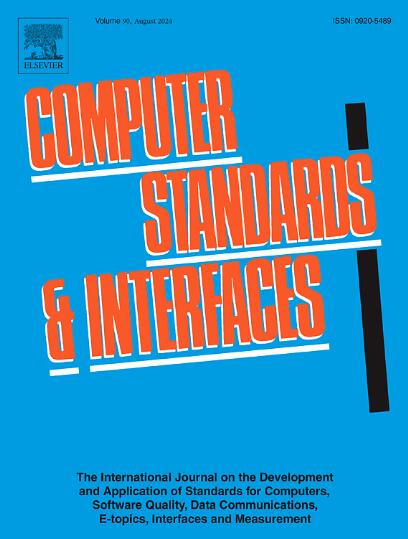基于3D-NoC的物联网MPSoC架构中排序任务映射技术的安全感知多标准决策框架
IF 3.1
2区 计算机科学
Q1 COMPUTER SCIENCE, HARDWARE & ARCHITECTURE
引用次数: 0
摘要
高效任务映射技术(TMTs)通过优化资源分配和最小化通信漏洞,在提高部署在物联网环境中基于三维片上网络的多处理器片上系统(3d - noc)架构的安全性方面发挥着至关重要的作用。然而,由于评估标准的重要性、这些标准之间的数据变化、权衡和不确定性的差异,选择安全的TMT是一个新的挑战。本研究旨在利用多标准决策(MCDM)框架确定安全的TMT。我们的方法分为三个阶段。首先,本文建立了考虑10个准则和10个备选方案的TMT决策矩阵。其次,提出了带有加权模糊判断矩阵的毕达哥拉斯模糊集(PYS-FWJM)方法来确定十个评价指标的权重。此外,采用MULTIMOORA-Borda方法构建了基于10个关键选项的TMT选择模型。标准加权结果表明,通信开销(0.1038)、热管理(0.1021)和成本效益(0.1029)是影响TMT选择的最关键因素,强调了高效数据传输、热稳定性和资源优化的重要性。MULTIMOORA-Borda排序结果表明,动态电压和频率缩放(DVFS)是最有效的TMT,而分支定界是最无效的TMT。通过灵敏度分析和Spearman技术验证了该框架的有效性和鲁棒性。本研究提供了一个结构化和可扩展的评估模型,使研究人员和从业者能够提高TMT效率,同时确保在物联网驱动的环境中提供强大的安全保护。本研究的成果有助于通过促进可持续物联网实现可持续发展目标12。本文章由计算机程序翻译,如有差异,请以英文原文为准。
A security-aware multi-criteria decision-making framework for ordering task mapping techniques in 3D-NoC based MPSoC architectures of IoT
Efficient Task Mapping Techniques (TMTs) play a crucial role in enhancing the security of 3-Dimensional Network-on-Chip-based Multiprocessor Systems-on-Chip (3D-NoC-based MPSoCs) architectures deployed in IoT environments by optimizing resource allocation and minimizing vulnerabilities in communication. However, selecting the secure TMT is a fresh challenge due to the difference in importance of evaluation criteria, data variation among these criteria, trade-offs, and uncertainty. This study aims to determine the secure TMT utilizing the Multicriteria Decision-Making (MCDM) framework. Our methodology is separated into three phases. Firstly, this paper establishes a decision matrix for TMT, considering ten criteria and ten alternatives. Secondly, the Pythagorean Fuzzy Set with Weighted Fuzzy Judgment Matrix (PYS-FWJM) method is proposed to determine the weights of ten evaluation criteria. Moreover, the MULTIMOORA-Borda method is employed to construct the TMT selection model based on ten key alternatives. The criteria weighting results highlight that communication overhead (0.1038), thermal management (0.1021), and cost-effectiveness (0.1029) are the most critical factors influencing TMT selection, emphasizing the importance of efficient data transfer, thermal stability, and resource optimization. The MULTIMOORA-Borda ranking results indicate that Dynamic Voltage and Frequency Scaling (DVFS) ranks as the top TMT, while the Branch-and-Bound is the least effective TMT. The framework's effectiveness and robustness are verified through sensitivity analysis and the Spearman technique. This research offers a structured and scalable evaluation model that enables researchers and practitioners to enhance TMT efficiency while ensuring robust security protection in IoT-driven environments. The outputs of this study contribute to achieving SDG 12 by promoting sustainable IoT.
求助全文
通过发布文献求助,成功后即可免费获取论文全文。
去求助
来源期刊

Computer Standards & Interfaces
工程技术-计算机:软件工程
CiteScore
11.90
自引率
16.00%
发文量
67
审稿时长
6 months
期刊介绍:
The quality of software, well-defined interfaces (hardware and software), the process of digitalisation, and accepted standards in these fields are essential for building and exploiting complex computing, communication, multimedia and measuring systems. Standards can simplify the design and construction of individual hardware and software components and help to ensure satisfactory interworking.
Computer Standards & Interfaces is an international journal dealing specifically with these topics.
The journal
• Provides information about activities and progress on the definition of computer standards, software quality, interfaces and methods, at national, European and international levels
• Publishes critical comments on standards and standards activities
• Disseminates user''s experiences and case studies in the application and exploitation of established or emerging standards, interfaces and methods
• Offers a forum for discussion on actual projects, standards, interfaces and methods by recognised experts
• Stimulates relevant research by providing a specialised refereed medium.
 求助内容:
求助内容: 应助结果提醒方式:
应助结果提醒方式:


